The introduced Slater-eating Spider, has a strong aversion to ants, which may help to limit its distribution in Australia.The Slater- eating Spider has an orange-reddish upper body, and a light grey-orange abdomen. Males are approximately 11mm and females around 14mm in length. They have large fangs to aid in the capture of prey. They have six eyes arranged in an oval formation.
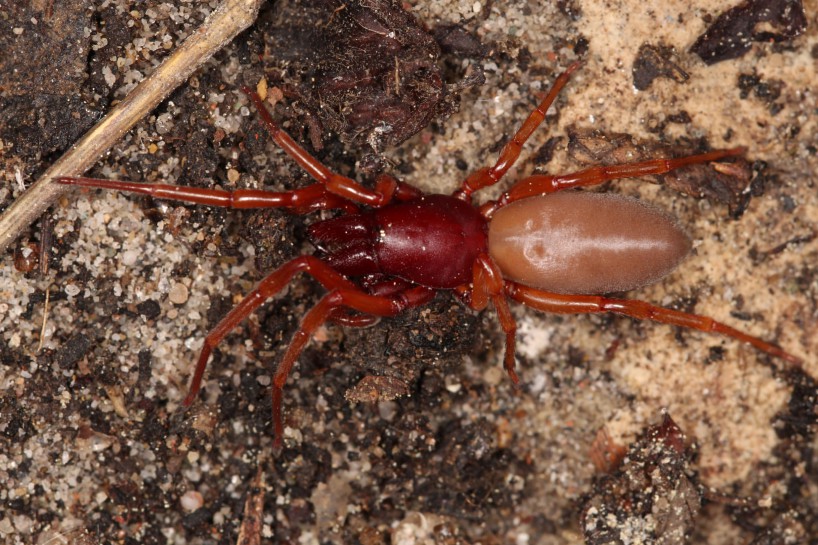
Reproduction/Lifecycle
After mating in April, the female builds a silk retreat and lays up to 70 eggs. The female will stay sealed in the retreat until the eggs hatch. She will then stay with her spiderlings for a short time until leaving the retreat.
Scientific Name: Dysdera crocota
Other Common Names: Woodlouse Spider (USA), Woodlouse Hunter (USA)
Species documented in 1838 by C. L. Koch.
Slater-eating Spiders – Dysderidae
This family only has a single species represented in Australia (Dysdera crocata) which was introduced from Europe and is common in gardens in the south-east of the continent. This spider preys upon slaters and pillbugs – the small armoured crustaceans also common in suburban backyards. It has large curved fangs to penetrate their segmented armour and has six eyes (as opposed to eight in many of the other families), which combined with its distinctive colour makes it quite easy to identify. It is a nocturnal wandering hunter that is usually encountered sheltering in moist areas beneath objects in the garden.
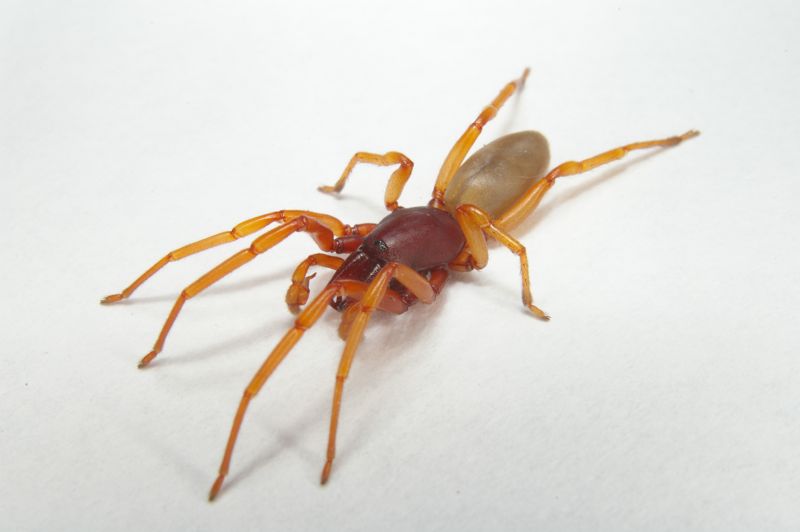
What is Slater-eating Spider bite like?
With its large fangs, this species is capable of delivering a sharp bite. Symptoms include local swelling and pain. However, bites are rare, and only a handful of bites by this species have been recorded from New Zealand even though these spiders are very common.
Identification
The Slater-eating Spider has a reddish upper body and legs, with a white-grey cylindrical abdomen. The fangs are quite prominent and project forward.
The body is about one to one-and-a-half centimetres long (excluding the legs). The cephalothorax (the fused head and thorax) and legs are red-orange and the abdomen is cream to pale coffee-coloured. These spiders only have six eyes rather than the usual eight. The chelicerae (the structures that bear the fangs) project forward and are quite large relative to the size of the spider.
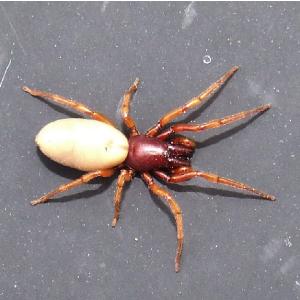
Habitat
The Slater-eating Spider prefers to hide in sheltered, damp, ground habitats such as those provided by logs, rocks and rubbish, and is sometimes found in urban gardens under old bricks or paving.
The Slater-eating Spider lives primarily in ground habitats, under rocks, logs, etcetera. It is found throughout south-east Australia. It prefers warm and damp habitats. In other parts of the world it is known as the Woodlouse Spider. Woodlouse being another word for slaters.Under rotting timber in garden mulch where slaters are plentiful.
Diet
Miscellaneous
The bite of this spider can reportedly cause itchy local reactions, and a redness of the area. Due to the large fangs of this spider, the bite can be painful. The bite is not considered dangerous, but if bitten, please seek medical advice.
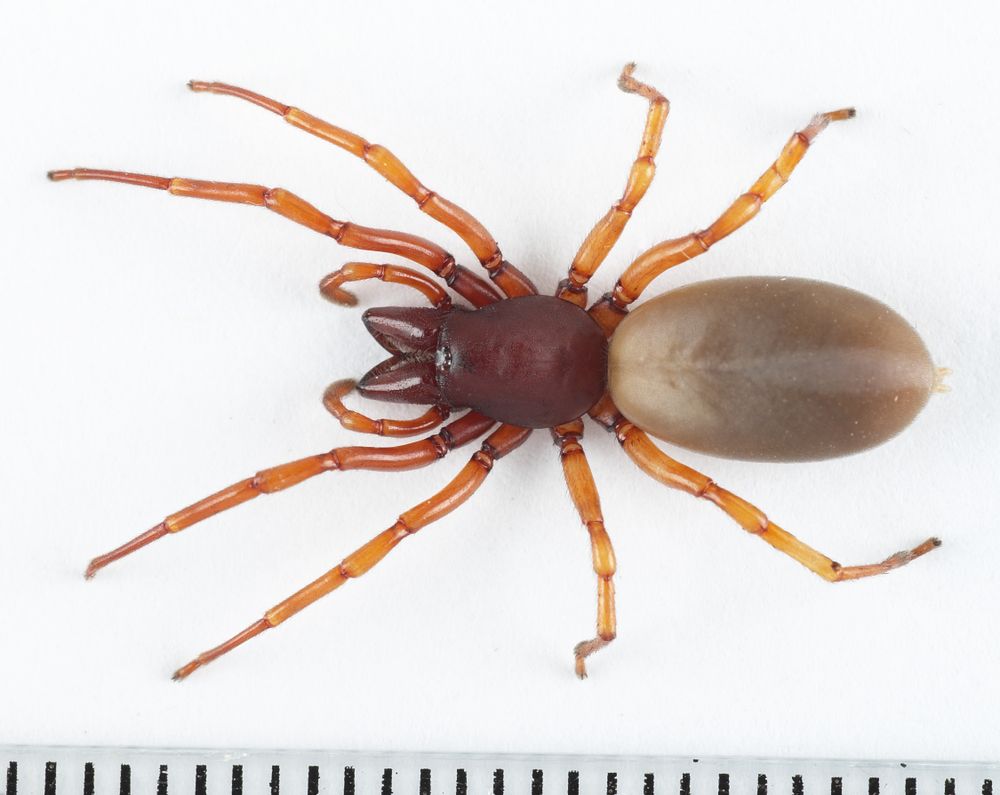
Distribution
The Slater-eating Spider, Dysdera crocata, is thought to have been introduced into Australia from Europe and only occurs in the south-eastern part of the continent. It appears that this spider has a strong aversion to ants, which may help to limit its distribution in Australia.
Feeding and diet
The Slater-eating Spider gets its name from its liking for woodlice or slaters (Isopoda), which it grasps with its specially elongated fangs.
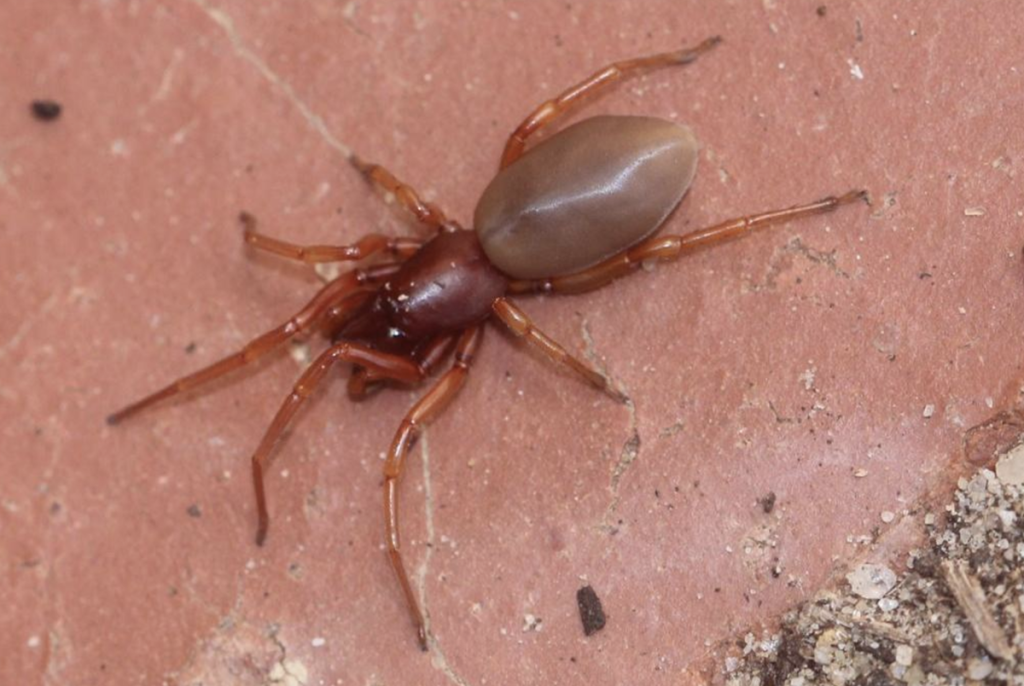
Other behaviours and adaptations
The Slater-eating Spider does not make a web, instead building a silken sac-like retreat in which it rests, moults and lays eggs.
Life history cycle
The female Slater-eating Spider will seal herself into her retreat with her eggs until they hatch and the spiderlings are ready to disperse.
slater-eating spider poisonous
The bite of the Slater-eating Spider is not considered dangerous but the large jaws can give a painful bite and may cause local redness and swelling.
